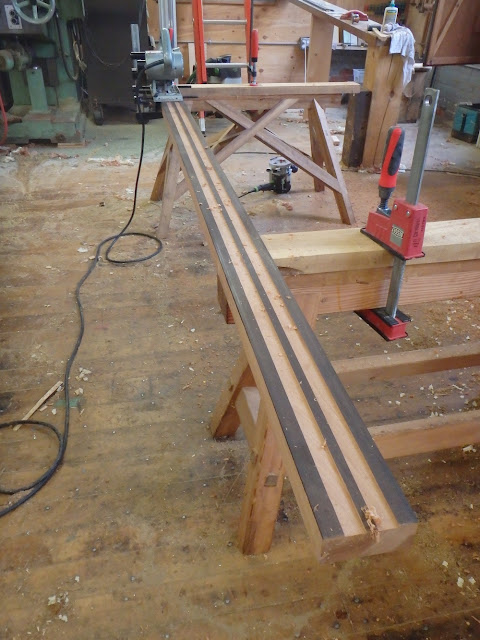Before we get to today’s post, I wanted to make a brief note about comments on this blog. All comments are moderated, and normally, when someone posts a comment, I receive an email notification, and from there I can post it, delete it, or mark it as spam. If a comment has the name of the commenter appended, and is not spam (not that one ever receives spam from people using their real name), I post it. If the comment does not have the commenter’s name appended, no matter how wonderful a comment it might be, I delete it. Then, there are spam comments, which are marked as such and flushed down the virtual toilet where they belong.
Recently I noticed some comments from posts 97 and 98 in the ‘Ming-Inspired Cabinet’ series, and for some reason I never received direct notification of these comments, but found that the comments (later?) appeared in the comment management section of my blogs control panel. This I discovered by happenstance weeks afterwards. I’ve no idea why that happened, but as soon as I came across those comments, I posted them.
I almost always respond to comments, even if to only say 'thank you’, however once in a while I publish a comment and then I get distracted with something and the comment, so to speak, slips through the cracks. Indeed, I have come across posts from years back where people had commented and I did not make any reply. When I find that, I will immediately make a reply, however in some cases years have passed and I doubt the person to whom I am replying ever sees that I did make an answer. For circumstance that I am deeply regretful. I know that for some folks, receiving no response after the trouble they took took to post a comment can be a bit of a turn off.
So, please know, that if by any chance you posted a comment at some point in the past, saw that it was posted, and I made no response, it was entirely an accident. It doesn’t mean I am snubbing you or have nothing to say or am not grateful in some way. Sometimes when you are juggling a few things a ball gets dropped, that is all.
And if you made a comment and it was not posted, it is almost certainly because you did not put your name to it. I do not like internet anonymity, and that is why I ask people to say who they are, regardless of whether they have something good to say or otherwise.
————–
Back to the current wok on the track and sliding doors for the middle room of the Machiya located in the Boston Children’s museum (BCM). Last time, I had re-sawn, jointed and planed stock for the stiles, rails, and shiki-i (sliding track), all a few millimeters over dimension. The next shop session I checked the pieces to see if they were still straight, re-jointed as necessary, and planed the parts to about 0.3mm over finish dimension. Then the parts were super-surfaced to exact size. Then the stiles and rails were dadoed for the panels:
Also, at this stage, lines were marked indicating rail junctions and mortise locations for the panel battens:
The shiki-i, which I chose to make out of Honduran Mahogany, was similarly planed to dimension and then super-surfaced to exact size. Then a coat of water-based stain was applied:
Though the stain is water-based, the cleanly sliced cells of the wood from surfacing mean that the grain is not raised.
A day later, after some careful calibration, I used my groover to cut the dadoes in the track for the doors:
David Pye’s notion of 'workmanship of risk’ was clear to me again, anytime I use the groover - the tool must be perfectly guided as any slight deviation or pressure can result in a spoiled cut in a blink of an eye. Fortunately, all went well, and here I’m wrapping up the second pass:
Later, the piece received more stain, and is still wet in the following photo:
One coat is in fact sufficient, however I find a second coat gives a very slightly more even appearance.
The rails connect to the stiles by way of twin tenons and have a mitered return on the front face. here I’m rough-cutting the tenons:
Result:
A while later all eight rail tenons sets were rough cut:
I’ll pare the shoulders with a guide block next time, and trim the tenons the the required height.
The stiles were then mortised for their battens:
Another round in the shop should see me through the remainder of the joinery work. Stay tuned for more and thanks for visiting the Carpentry Way.
via Tumblr https://davidpires578.tumblr.com/post/165064474009










No comments:
Post a Comment